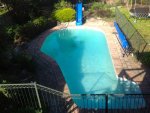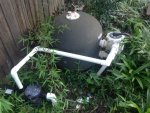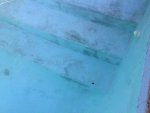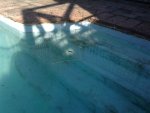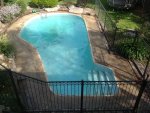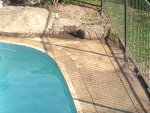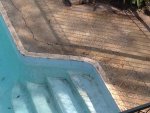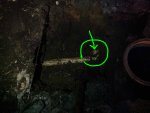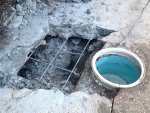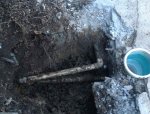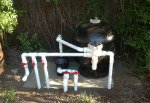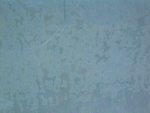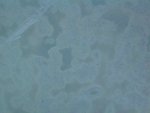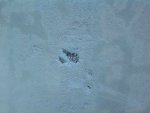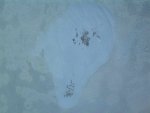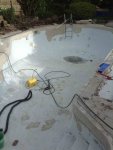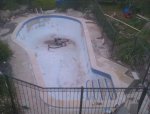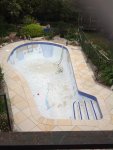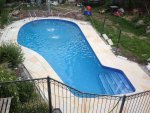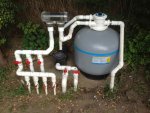Here in Melbourne we are in the better end of Winter, Spring around the corner so it's time to get this pool sorted. We moved into this house at the end of last year (2012) and the pool appears to have been pretty unloved for the last 20 years! It's a marble sheen surfaced concrete pool, about 42000L, 9.5m x 4.5m (2.5m at the narrow end) and just over 5' at the deepest point.
[attachment=2:2uu6gh9q]IMG_0674.jpg[/attachment:2uu6gh9q]
The surface is pretty badly worn, looks very patchy and has areas where the concrete is showing through.
[attachment=0:2uu6gh9q]IMG_0677.jpg[/attachment:2uu6gh9q]
The plan is to empty the pool, prep and coat the surface with a pool specific epoxy, from here http://www.poolpaint.com.au, it's Epotec epoxy and will be the Pacific colour. From looking at their pics, it looks great and I like the idea of the smooth surface and the DIY ease. The waterline tiles will be replaced with a glass mosaic in some sort of blue, and the surrounding coping/paving replaced with sandstone, most likely.
There will also be a summerhouse/store/pumphouse built at the top left of the first pic, and all the pump/filter/SWG moved there. The current setup is very simple:
[attachment=1:2uu6gh9q]IMG_0675.jpg[/attachment:2uu6gh9q]
We'll probably re-use these as they are still going fine, the SWG will be new, along with a solar set-up. I had looked into heat pumps but to get a decent sized one is quite expensive to a) buy and b) run, and electricity isn't getting any cheaper!
So stay tuned and we'll see how it goes! A fair amount will be made up as we go, and I will be doing most of the work myself. I'm looking forward to it, even though it will be a sizeable job.
[attachment=2:2uu6gh9q]IMG_0674.jpg[/attachment:2uu6gh9q]
The surface is pretty badly worn, looks very patchy and has areas where the concrete is showing through.
[attachment=0:2uu6gh9q]IMG_0677.jpg[/attachment:2uu6gh9q]
The plan is to empty the pool, prep and coat the surface with a pool specific epoxy, from here http://www.poolpaint.com.au, it's Epotec epoxy and will be the Pacific colour. From looking at their pics, it looks great and I like the idea of the smooth surface and the DIY ease. The waterline tiles will be replaced with a glass mosaic in some sort of blue, and the surrounding coping/paving replaced with sandstone, most likely.
There will also be a summerhouse/store/pumphouse built at the top left of the first pic, and all the pump/filter/SWG moved there. The current setup is very simple:
[attachment=1:2uu6gh9q]IMG_0675.jpg[/attachment:2uu6gh9q]
We'll probably re-use these as they are still going fine, the SWG will be new, along with a solar set-up. I had looked into heat pumps but to get a decent sized one is quite expensive to a) buy and b) run, and electricity isn't getting any cheaper!
So stay tuned and we'll see how it goes! A fair amount will be made up as we go, and I will be doing most of the work myself. I'm looking forward to it, even though it will be a sizeable job.


